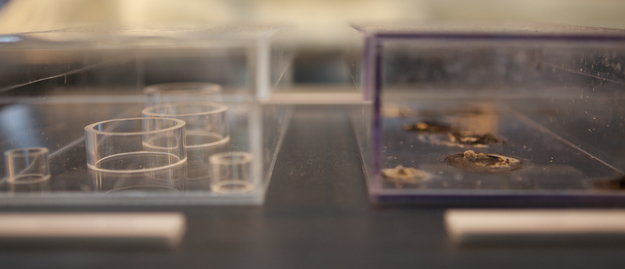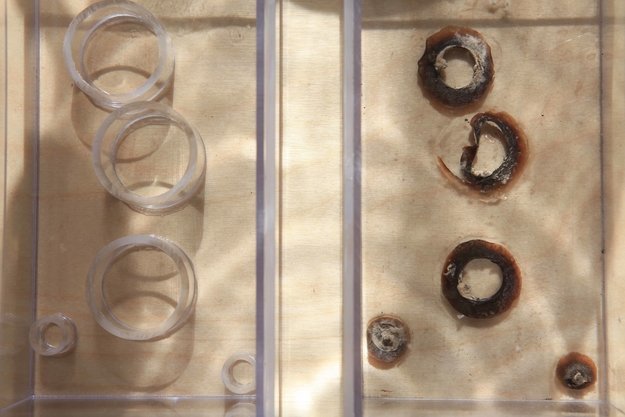Decay and death are essential natural processes, for the growth of new life. However, in modern society, the natural cycle of life tends to be denied. This research-project looks at the study and the application of a fungus, Phanerochaete Chrysosporium, to synthetic, toxic materials: Plastics.
Could fungi be able to open up new possibilities and provide us with responsible solutions in remediating the harmful consequences that our modern civilization has been creating during the last century?
The study of the application of Phanerochaete Chrysoporium as a bio-filter has shown its rather good ability in removing gaseous aromatic compounds, solvents and more generally volatile organic compounds, from contaminated sites. Furthermore, recent mycological research has demonstrated the ability of this model white-rot fungus in decomposing phenolic resins and more generally in degrading plastics, by literally feeding on them.
fungi eating plastic (comparison start-end; 10 months process) -
fungi eating plastic (comparison start-end: 10 months process) -



The project focuses on a globally well-known iconic object: the plastic monobloc chair. The choice clearly aims to address issues related to disposability, plastic toxicity, and the possibility of having fungi being able to “kill” this immortal material. The chair is used as a statement about the life-cycles of consumer products in comparison with the immortality of the materials most of the consumer products are made of.
Why shouldn't a chair, completely made out of synthetic, inhert, immortal material, dress up for death?
Highlighting the complementarity of life and death as a whole, the design plays with the idea of infusing life in a dead everlasting material, in order to trigger a process of final dissolution.
injecting life in a dead everlasting object: plastic chair -

Through this social narrative and such visionary statement the designer aspires to question our “throw away” culture and at the same time to show how we could exploit, in a beneficial way, the resources that this social behaviour created, while addressing the designer’s role and responsabilities.



